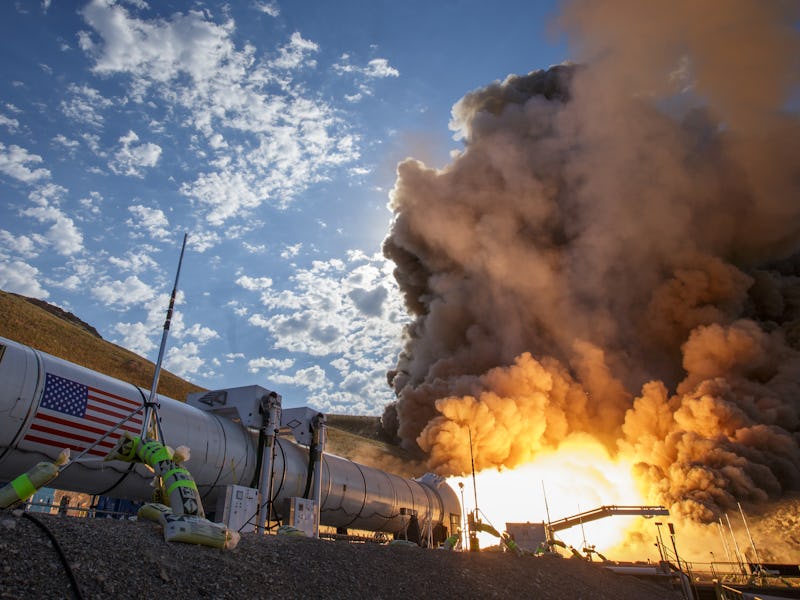What's Next for NASA's SLS Rocket?
The boosters will be used in NASA's missions to Mars.

NASA trumpets it as the “most powerful rocket in the world,” and the Space Launch System, or SLS rocket booster, last week successfully conducted the second and final test of its qualification motor, with massive orange flames and towering plumes of smoke sent into the Utah sky.
NASA calculates that “the boosters will provide more than 75 percent of the thrust needed to escape the gravitational pull of the Earth, the first step on NASA’s Journey to Mars.”
But now that NASA has completed the very public test, what’s next? NASA engineer Tim Lawrence says there’s much work to be done: he and his fellow engineers have already begun the post-test process of evaluating the data. In the coming weeks, they’ll verify the instrumentation channels and that the data is essentially good — everything calibrated correctly and so forth — before it’s time to disassemble it.
Lawrence and his colleagues will take the motor apart and record various measurements and data from it to fold into the final assessment and analysis — work that will take the rest of the year. Once finalized, that data will then be cleaned up and delivered in a final Design Certification Review (DCR) some time in 2017. Next summer, the official review board will complete its analysis of it and — if all goes according to plan — certify the design as ready to fly.
“Now that we’ve gotten our status test complete, if the data comes back we as we expect it will, then we should be very much on our way with building out the flight hardware and moving this forward,” Lawrence tells Inverse. “Everything looks very good right now.”
Lawrence and other NASA engineers have already begun constructing the physical flight hardware that will fly during Exploration Mission-1. That work will also continue over the next year and a half, after which the hardware will be shipped down to the Kennedy Space Center in Cape Canaveral, Florida. Once there, the assembly process begins — attaching the motor segments and getting everything ready to put on the Mobile Launch Platform.
NASA's Solid Rocket Booster (SRB).
The motor itself comprises five segments: the forward segment, three essentially identical center segments, then the aft. Once the forward end is ignited, the propellant burns from the inside out through a hole designed in the centerboard. The forward assembly includes the forward skirt and the nose cone, while the aft assembly, which attaches to the bottom of the motor and supports the weight of the whole vehicle, contains the control system that steers things.
The booster is the only piece of technology in existence powerful enough to get us out of Earth’s lower orbit for the Mars missions. Much of that uniqueness, explains Lawrence, owes to the sheer size of the thing — 12 feet in diameter, 154 feet in length.
“A lot of it’s just the power of the motor,” Lawrence says. “That relates directly to how much energy comes out the back, which relates directly to how much mass you’ve got. It gives you a lot of thrust. There aren’t any other solid rocket motors in the world right now that are this large; there aren’t any liquid boosters that are this large and the right design.”